Secret Weapon
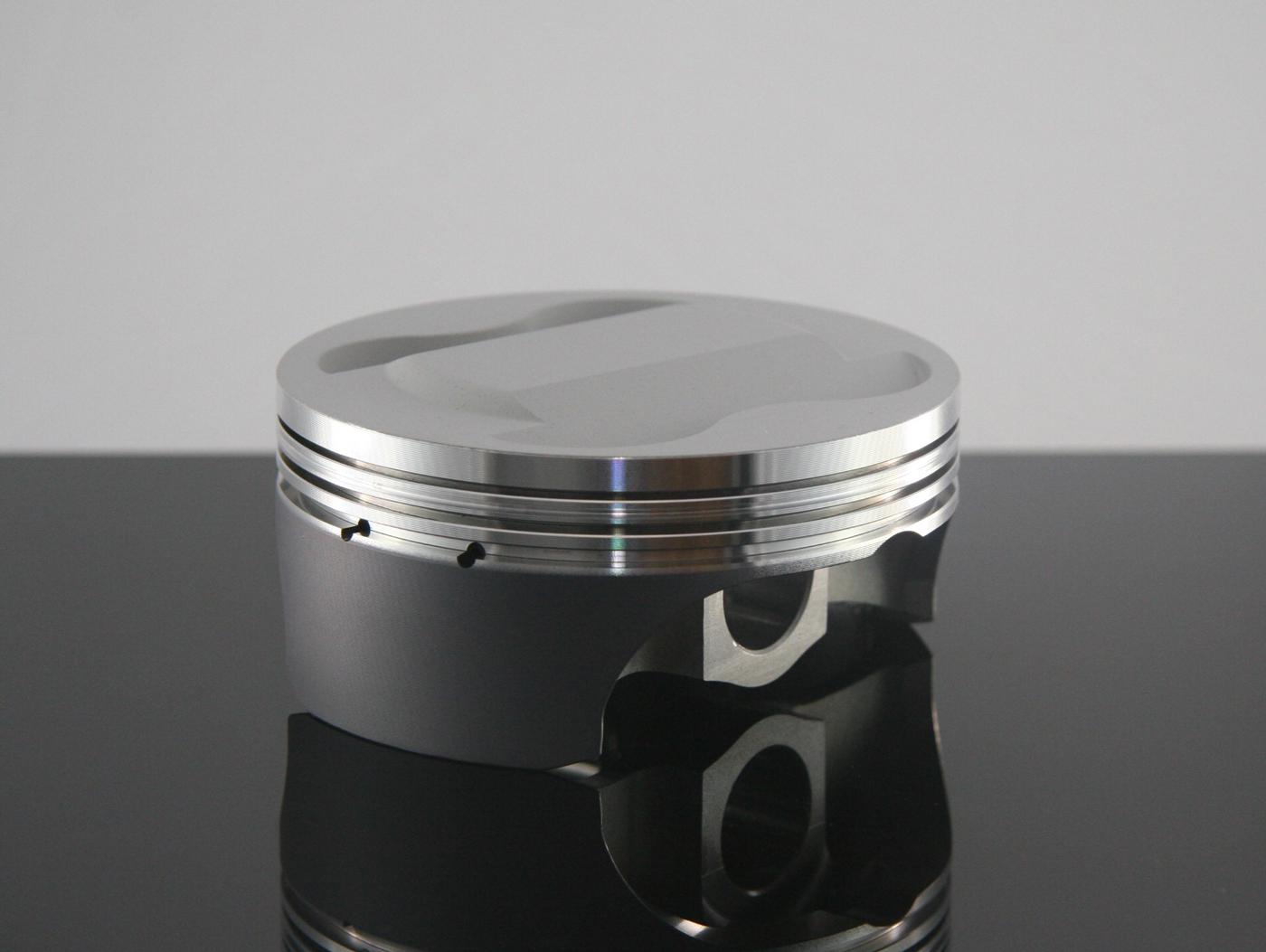
Increased durability, reduced friction, and enhanced thermal control are just some of the benefits that can be gained from coating engine and driveline parts. Other coating advantages, though, are a little more unexpected.
The coatings used on engine components and driveline parts have evolved to a point where they do very specific—and sometimes contrary—things. One type of coating attracts oil. Another coating sheds oil. There are coatings that act as a heat barrier. Others absorb and transfer heat. Some coatings have the hardness of a diamond. Others are soft enough to scratch with a fingernail. Some cure to a beautiful shine, while one company, Swain Tech Coatings of Scottsville, New York, warns that its White Lightning exhaust coating is downright ugly. “Which is not quite fair,” admitted Richard Tucker. The coating is an effective thermal barrier, but it can mar or scratch during shipping or installation, and it can change color when exposed to heat. Said Tucker, “We’d rather be very clear that customers should not consider our exhaust coating if the appearance is important to them.”
Parts coating has tangible benefits that can be felt as well as seen. “Roundy-round racers with a coated motor are going to blast off corners quicker and smoother,” said Carl Benton of Polymer Dynamics (PolyDyn), Houston, Texas. “And drag race motors accelerate faster.” The “heavy motors” used in drag racing and tractor pulling, “the blown alcohol and blown fuel motors, are using our coated rod and main bearings,” Benton said, “and they’re getting twice or three times the amount of runs because of the way the bearing can hold onto the oil.”
Line2Line Coatings of Clarkston, Michigan, is best known for its abradable powder coatings (APC) for piston skirts and other components. “That’s what sets us apart from everybody else,” explained Mark Gelstein. “We can put it on heavy, and it will adjust to fit under temperature and under load.”
That adjustment process, added Andy Suman, can actually be felt when racers are breaking in the pistons on track. “Sprint car guys will say, ‘Oh, you can feel it. At first the motor’s kind of tight, but as you do some laps, you can feel it find its fit,” he said. “It gets smooth and nice.’”
Sometimes, though, the benefits of a coating can surprise a racer.
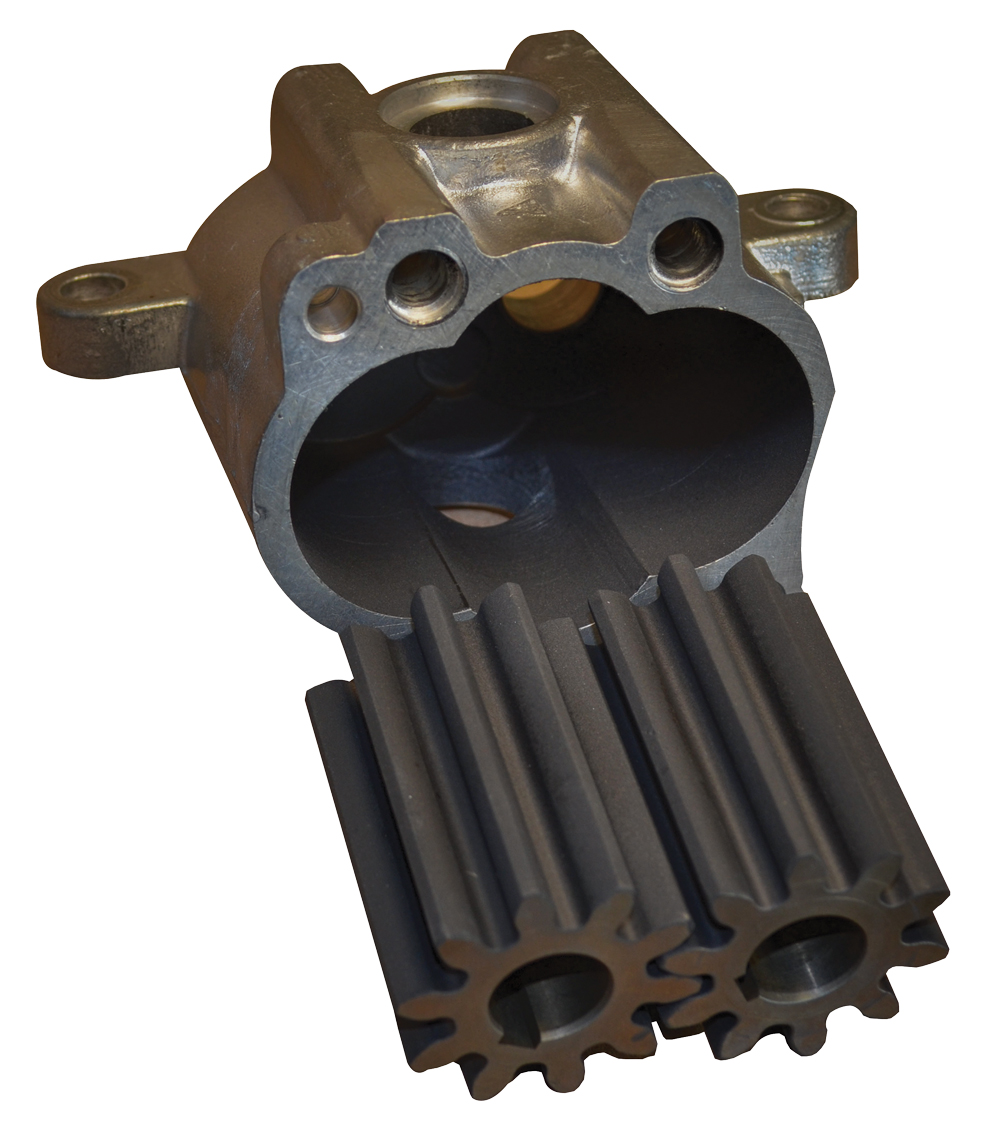
“I was working with a friend of mine as he was putting together an off-road racing bike,” said Jason Arbogast of Tech Line Coatings, Rutledge, Tennessee. “He mentioned that they wanted to pull some heat out of the engine, because the race that was coming up was going to be a mud race, and that was known to cause havoc on bikes because of the airflow restrictions when the mud gets into the radiator guards.” The motorcycle was treated with Tech Line’s air-cure thermal dispersant coating “on the engine, radiator, and any other part that would or could see heat.”
After the coatings were applied, the rider went out for some test laps but came back quickly, certain that the bike was running hot. “When we asked why, he said because his feet were warmer than normal,” Arbogast said. It turned out the bike was not overheating—far from it. “We checked the engine temp, and it was 20-plus degrees cooler. The coating was pulling heat off the engine so well, it was warming up his boots more than he was used to.”
That kind of anecdote got us to thinking, were there other unexpected, surprising, or hidden benefits to coating parts?
Piston Coatings
Piston coatings fall into two general types: coatings for the piston top and for the piston skirt. Each has a different role to play.
“Ceramic coatings on the top of the piston can greatly enhance flame propagation, so you’re burning fuel more effectively. The flame travel is more complete over the top of the piston,” explained Benton. “Because of that, some of our guys will, because the flame propagation has been enhanced, reduce the timing slightly, which makes more horsepower.”
Piston top coatings also act as a thermal barrier. PolyDyn’s ceramic piston top coating is a “synthetic polymer resin-based system that, as it cures, creates a ceramic matrix,” Benton said. “Then we add particles to it to reinforce its heat stability. The gold material in the coating is another pigment that adds resiliency.” The coating “reflects heat off the top of the piston, so piston temperatures during operation are much, much less than if it wasn’t on there. It’ll keep from reducing the Brinell hardness of the piston, which, if that occurs, can cause stress cracking afterwards. The coating enhances that stability and structural integrity.”
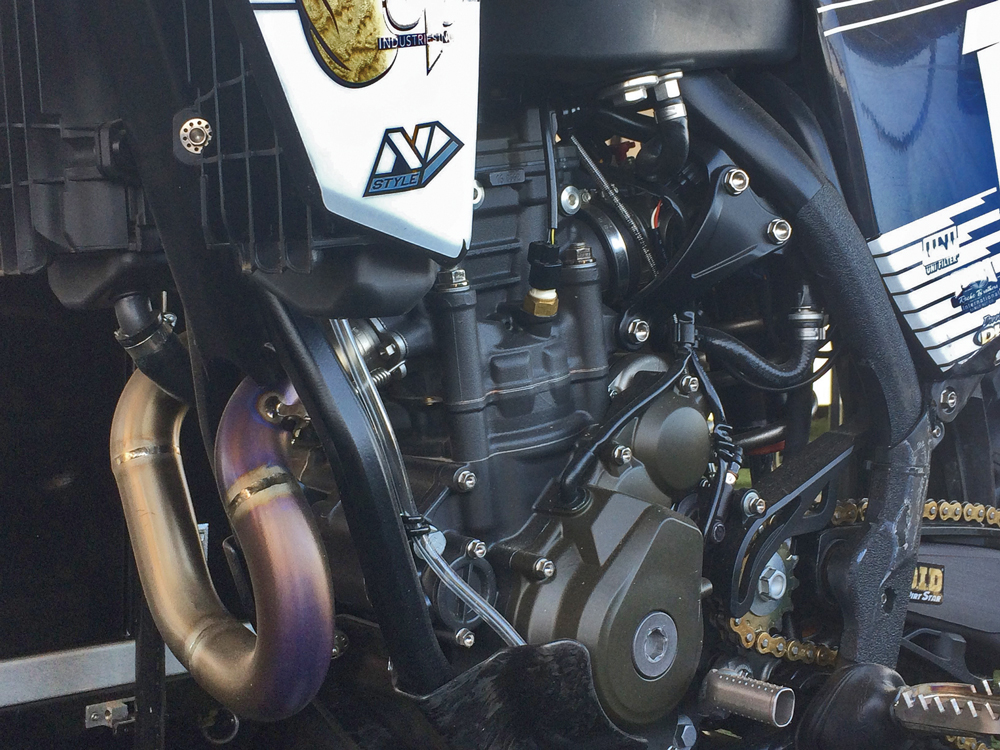
Tucker said the primary purpose of putting a thermal barrier coating on the piston top “is to provide a margin of protection against a bad tune, lean condition, bad fuel, and so on, where an unusual amount of heat is generated. An uncoated piston top could be destroyed or badly damaged if the top was not coated.”
Yet not only will the coated piston run cooler and retain more strength in normal operating conditions, “less heat passes through the coating and into the piston, wrist pin, and bottom end,” Tucker added. “Rarely is this such a dramatic change that you would have to make a clearance adjustment, but it is often noticeable enough that the evidence of heat you see on the bottom of the piston is much less or completely eliminated when compared to a piston that does not have our thermal barrier on top of the piston.”
Piston skirt coatings, on the other hand, primarily serve to enhance the lubrication between the piston and the cylinder wall, while also providing some thermal protection.
“We primarily use our PC-9 skirt coating to provide a margin of protection against wear, scuffing, and damage that can occur at cold starts, oil starvation, when clearances are off due to a heat surge, or the integrity of the oil film being compromised,” said Tucker. “In these situations, our PC-9 skirt coating can help reduce or eliminate damage.”
PolyDyn describes its RP skirt coating as “a ceramic-reinforced dry film lubricant with a low affinity for oil.” In other words, said Benton, “oil won’t stick to the skirt of the piston, so the skirt will ride on the film of oil on the cylinders.”
Line2Line’s abradable piston skirt coatings add to those traits by their ability to find the proper fit in a cylinder bore. “You can open tolerances up a little bit,” said Gelstein. “You don’t need to be so precise because the coating will take up any of that extra space and will find the ideal fit and then lock it in.”
When a piston finds that “ideal fit,” it stabilizes in the bore, which has a number of benefits. “You get less oil coming up into the combustion,” Suman said. “Oil takes away from the octane rating, so you’re more likely to get pre-ignition if the rings are allowing oil to go by. By getting less oil in your combustion, you can advance the timing a little bit.”
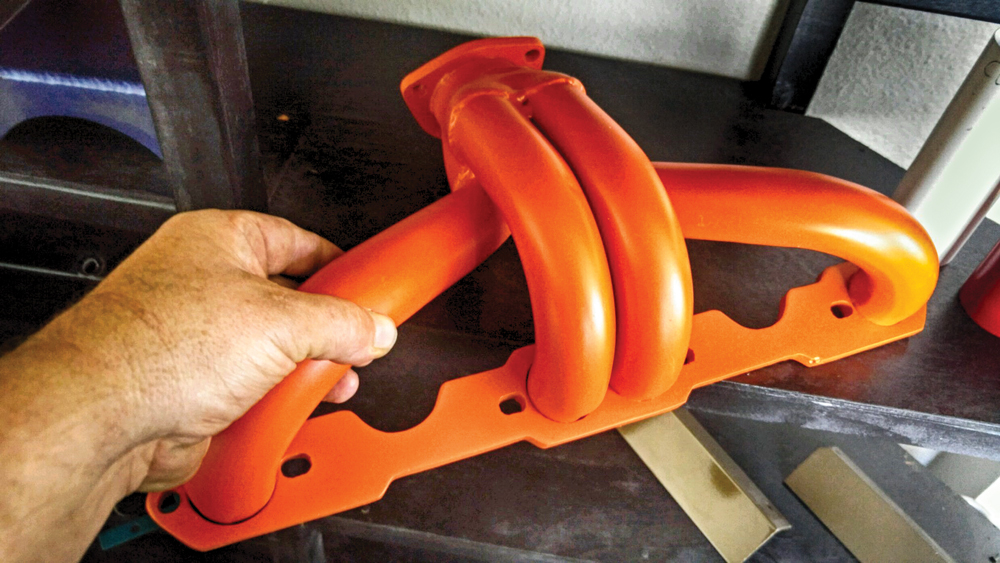
Also, “stable pistons with uniform oil film thickness move less, rattle less, and do not pierce oil films with impact events as often as standard, uncoated, loose-fitting pistons,” Suman added. “Stable pistons also make the rings’ job of sealing and survival much easier because they are not getting pounded on and/or piercing oil films to cause wear, which also creates high friction events. Stable rings stay in better contact with the piston and the bore and therefore improve heat transfer to the bore for a cooler piston.”
Gelstein and Suman said they’ve seen high-powered race applications “get 1.5–3 times the life of uncoated pistons that have lots of secondary motions from poor fit. We also see circle track engines staying together much longer and running more reliably in intense race conditions. In all these cases, if a set of cylinder kits in a multi-cylinder engine stays together longer, the ability to tune the engine improves because the underlying components are not changing as much between passes or races or nights. This means the racer can refine his strategy around the weather and other conditions with better precision.”
Pump Coatings
The abrade-to-fit nature of Line2Line’s APC coating has improved the efficiency of “oil pumps, turbochargers, superchargers—they’re all pumps,” Suman explained. “If you can create the same amount of boost with a slower rotor speed, then you’re saving energy.”
The APC coating on gerotor oil pump gears, for example, helps tighten the clearances beyond what’s possible with standard manufacturing practices.
“When you design an oil pump, it has to pump enough oil at the lowest rpm so the engine won’t eat itself,” Suman pointed out. “But the efficiency of oil pumps is low at low rpm because the clearances have a greater effect when it’s spinning slower. There’s more time for the fluids to leak backwards.” Tightening the clearances “stops those leaks and maintains high pressure at low rpm. Then you can either spin the oil pump slower to save energy or use a smaller capacity pump.” Likewise, “if you want to run lightweight oil to save parasitic loss but can’t get enough pressure with the lightweight oil because your pump leaks, if you put our coating on that oil pump you can spin it slower with a bigger pulley on it, and you’ll still always have enough pressure.”
In regard to superchargers, “a lot of the blowers have Nylatron inserts at the tips,” Suman noted. “They’ll scrub against the factory anodized coatings on the insides of those cases and will wear out. If you put our coatings inside the blowers, the tips last longer, because our coating doesn’t eat the Nylatron. So you might get 20 passes instead of 10, and your blower is more consistent again.”
Exhaust Coatings
Tucker said the primary purpose of Swain Tech’s White Lightning exhaust coating is to “keep the heat in the exhaust to keep heat out of the areas that are next to the exhaust—generally the engine bay or near the driver’s feet.” Excess heat in those areas “can be detrimental to all kinds of parts in the engine bay.”
Beyond the protection factor, reducing heat in the engine bay “can reduce intake temperatures, which is one way you can gain power,” Tucker added. “Also, more heat kept in the exhaust moves the heat more efficiently through the pipe, so it breathes or scavenges more effectively.” It’s common for that increased efficiency to result in a power gain, but he pointed out that the increase may not be significant enough to be felt. “Few will have the time and energy to dyno before and after, so we primarily focus on the heat management aspect” of the coating.
As an additional benefit, “over the years, we’ve often heard many racers, especially drag racers, will have our coating on their exhaust because it is so effective at managing heat that they can work near the exhaust shortly after finishing a run. They would not think of doing that without our coating on their exhaust.”
Arbogast recalled a story about how one of Tech Line Coatings’ exhaust coatings became a diagnostic tool. The company sells a line of red, orange, purple, and blue Ciloxide exhaust coatings that “darken when they get warm and go back to their original color when they cool off,” he explained. A customer who didn’t fully understand how the coatings responded to heat called to say the coating wasn’t working right. “When he applied the Ciloxide Orange coating and installed the headers on the vehicle, he told us only one of the tubes was staying bright orange. The other tubes were darkening as the engine was idling. When we talked, he realized that the tube that was not darkening was not firing. This color change has helped some with being able to take a quick glance at the headers, and if they all look the same, the engine is firing on all cylinders.”
Drivetrain Coatings
“Once somebody starts to see what you can gain in performance and durability, it’s hard to get away from coatings,” Benton said. He recalled being contacted by Tim Cole, who worked for TCI. “I knew him from his drag racing days. We used to coat all his stuff.” Cole told Benton TCI was having warranty issues with its Powerglide transmissions and thought PolyDyn coatings might help, particularly on one part: the outer pump gear in the front pump. “After doing tons of tests, we reduced their warranty issues company-wide by 97%,” Benton said.
But it didn’t stop there. “I started getting 1,000–1,500 pump gears every three months from those guys,” Benton recalled. “I called TCI and said, ‘There ain’t no way you’re selling that many transmissions.’ They weren’t, but what they were doing was selling coated front pumps, and the rebuilders were saying, ‘These things are next to bullet-proof.’ They found a new avenue of business that they would never have explored if it wasn’t for the fact that the coating in the front pumps improves the durability so radically.”
A coating’s thermal-control properties can have benefits beyond the engine compartment. Arbogast said one of Tech Line Coatings’ applicators “was looking for ways to help a customer reduce heat on a side-by-side used for off-road racing. We recommended our Thermal Dispersant coating. It was applied to the drive clutch and secondary clutch, and the temps were reduced by about 100 degrees.” That made the customer happy, as did this unexpected benefit: “Not only did it remove the heat from the clutch system, cleaning it was easier as well. The coating has a hydrophobic property to it which, when it would get wet or muddy, would fling off the water and mud faster.”
The Secret Weapon
Beyond all these tangible benefits of performance parts coatings, Benton touched on an unexpected advantage he’s seen over the years.
“When you tell a racer he has a secret weapon that most likely nobody else at the track has, it makes a psychological difference that shows up at the track. When a racer knows he has a coated motor, he can push the car harder and do the whole event with more confidence than he’s ever had.” Benton cited drivers he’s worked with, including Rusty Wallace during his 1989 NASCAR Winston Cup Championship year and “something like 18 championships” won by Steve Kinser, all due, in part, to PolyDyn coatings. “Steve realized he could push his car harder than anything, and overheating the motor wasn’t an issue.
“Short-track guys, and stock and super stock racers, because they have to run steel rods, we put the oil-shedding polymer coating on the rods and cranks, and the rpm is so much smoother and quicker,” Benton said. “All of a sudden, you know you’ve got an edge.”
Even Benton’s son has benefited from the secret weapon. “My son had a NASCAR late model for about a year, and his first time out, here he is a rookie, and he said, ‘Dang, Dad, everybody out there is slow. I can jump on any of them.’
“They do feel it. And they didn’t know they could feel something like that.”
Coating a Formula 1 Airplane Engine
When we spoke with Carl Benton of Polymer Dynamics in Houston, Texas, his technicians were coating engine components for a Cassutt Formula 1 airplane in preparation for the National Championship Air Races in Reno, Nevada. This is a relatively new race discipline for PolyDyn.
“We got involved a couple years ago, showing them how to pick up the speed of the plane,” Benton explained. “I’m a nobody with these racers, but all of a sudden everybody wanted my business card because we picked up the speed of this one particular airplane by almost 9 mph. Even with that itty-bitty motor these planes can go as fast as 250 mph.” The coatings used on the Cassutt’s engine are the same PolyDyn uses in “automotive applications every day.”
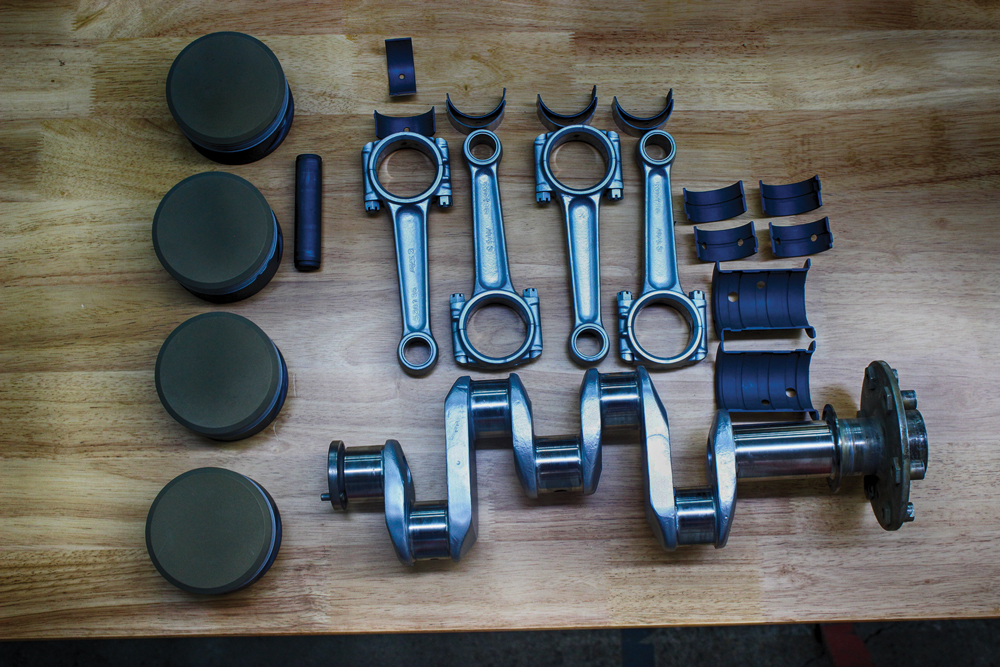
The bearings are coated with PolyDyn DL, “which stands for dry lubricant. It can work dry, but it’s unique in that it has a polymer that creates an affinity for oil. Oil wants to stick to the bearing like concrete.”
The crankshaft is coated with PD14 Silver, “which has PTFE in it, a material similar to what you’d find in a frying pan,” he continued. “It is a very resilient coating because it is a nylon composite resin-based system. When we compose this coating, we start off with the base system—the actual name is polyamide-imide—then we add nano-aluminum pigment particles for color and abrasion resistance. The PTFE gives it its slippery, non-stick surface. We use the same coating on connecting rods. Oil does not want to stick to that surface. It’s the opposite of what’s going on the bearings.”
The piston tops are coated with PolyDyn HS, a “synthetic polymetric ceramic” that makes the piston stronger by enhancing the dome’s structural integrity. It protects the piston from heat and also distributes the heat through the combustion chamber, allowing for more efficient flame travel.
Piston skirts receive PolyDyn RP, “two unique fluoropolymer coatings. The first one put on is a very tenacious coating, ingraining itself into the metal substrate. Then the bearing coating PolyDyn DL goes on top of it, wet-on-wet, so as it starts to cure, the coatings intermingle. The first coating acts as a primer, but it’s a dry film lubricant. The second coating has the ability to retain oil on the piston skirt,” Benton concluded. —Drew Hardin
SOURCES
Line2Line Coatings
line2linecoatings.com
Polymer Dynamics
polydyn.com
Swain Tech Coatings
swaintech.com
Tech Line Coatings
techlinecoatings.com
 MEMBERSHIP LOGIN
MEMBERSHIP LOGIN JOIN PRI
JOIN PRI


